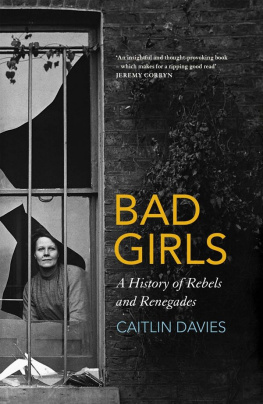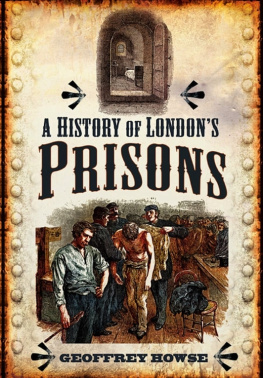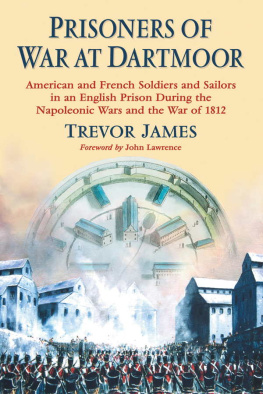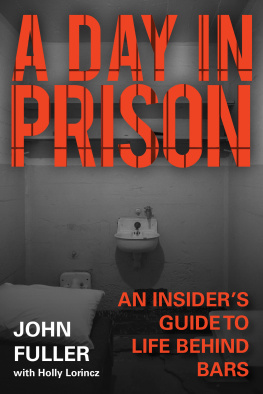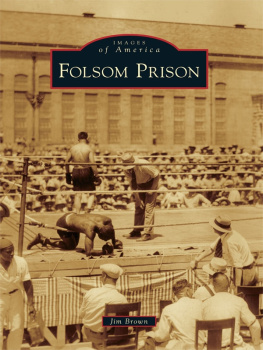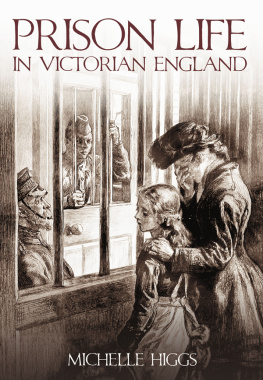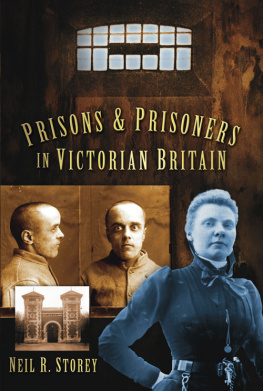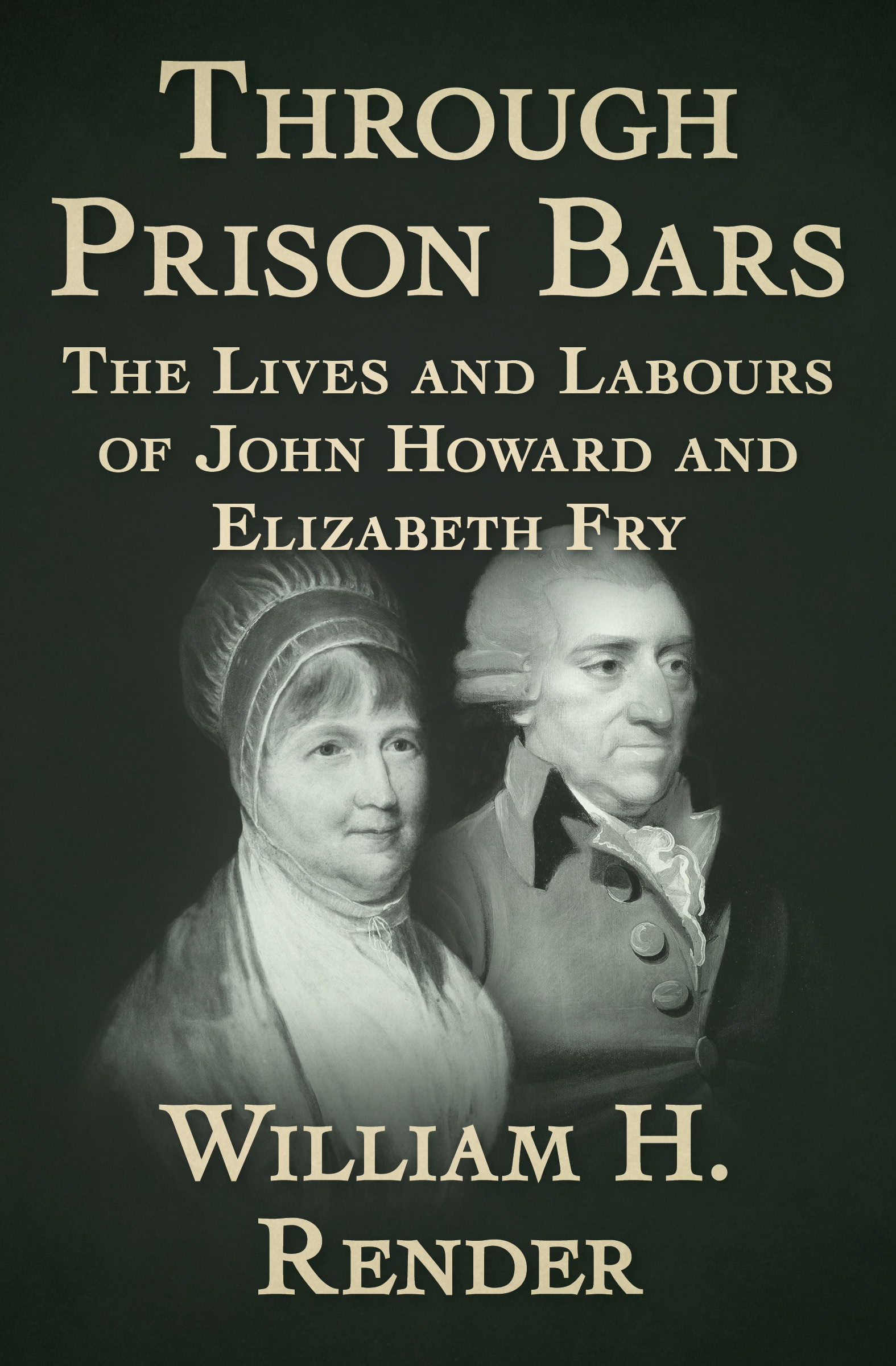Through Prison Bars
The Lives and Labours of John Howard and Elizabeth Fry
William H. Render

MYSTERIOUSPRESS.COM

I was in prison, and ye came unto Me.St. Matt. xxv. 36.
PREFACE
THE AIM OF the present volume may be fairly inferred from its titleThrough Prison Bars. It seeks primarily to throw a clear light on what was at one time a terribly dark province of human life, since opened up by the wise and gracious philanthropy of our ageto present a birds-eye view, as it were, of a grand movementPrison Reform.
In that movement two names stand out in luminous charactersthe undaunted, noble-minded JOHN HOWARD and the saintly, large-hearted ELIZABETH FRY . Their labours were distinct in a sense, yet they embraced one object: the illustrious pair were indeed the Prisoners Friends. Brave man and pious woman, each did a work for God and humanity, which is at once an example and an inspiration to all who would do noble things, not dream them all day long. Their lives are worthy of record and earnest study; while the lessons to be learned from them may be put into daily practice with blessing to all.
But, besides the telling of two great lives, this volume aims to give a brief history of Prison Philanthropy from its inception by Howard to its position as embodied in the several Societies existing at the present year for this purpose. As a biography and as a history it should be deeply interesting and in-spiritingly instructive. May it prove so, especially to the young who are filled with zeal and noble purpose to serve Christ and mankind!
It only remains for the Author to express his thanks for the kind and ready assistance given by Mr. William Tallack, of the Howard Association.
W. H. R.
JOHN HOWARD
CHAPTER I
EARLY DAYS TO MANHOOD
STANDING UNDER THE dome of Sir Christopher Wrens famous Cathedral of St. Pauls, in London, near the pulpit the visitor is suddenly attracted by a fine monumental statue. Drawing near, it at once claims attention by its subject and execution. It is seen to be a cenotaph of some remarkable personage. On a pedestal is the life-size figure of a man in classic costume. In his right hand he holds a key, in his left he grasps a roll. At his feet are chainsprison manaclesbroken and trampled on. It is a commanding figure, bearing on the face a look of mingled benevolence and firmness. What does it mean? Whom does it represent? we ask ourselves. Then we glance lower, and on the front of the pedestal we see a touching scene depicteda prison scene, in which is represented a man relieving several poor victims bound with chains. Above this are two words JOHN HOWARD .
Why that monument was placed by the English people in such a world-renowned edifice, who the man thus depicted was, and what he did to merit so splendid a recognition, are questions worth an answer. Let us, then, together seek it by tracing this mans life from its beginning to its close. Surely in doing so we shall find a pleasing study and receive a helpful influence.
According to the St. Pauls inscription, it was on September the 2nd, 1726, at Hackney, that John Howard was born. In the absence of official proof both date and place have been disputed; but there seems little doubt that the facts given on his memorial are correct. Hackney was then, more than a hundred and sixty years ago, a pretty country village, some three miles from Londons busy city. Not yet had the long arms of the huge metropolis encircled its many outlying picturesque parishes.
His father was an industrious business mana partner in a carpet and upholstery concern close to Long Lane, Smithfield. He was evidently a plodding, prosperous tradesman, for he had managed to possess several little propertiesone at Hackney, another at Enfield, and a third at Cardington, in Bedfordshire. To all these pleasant retreats from business cares he delighted to repair occasionally, and enjoy therein the sweet recreative influences of Nature.
Howards mother was presumably a good woman. Her maiden name was Cholmley. Unhappily, she died while her son was very young. Yet Howard always thought and spoke of her with a tender reverence; in fact, he ever deplored her loss, with its consequent lack of gracious love and care which only a true mother can bestow. This is a beautiful trait in Howards firm character, which has its counterpart in the case of many another hero of history.
No ruddy, robust child was Howard. On the contrary, he appears to have been weak, pale-looking, and even sickly. Consequently his father, fearing for the health of his motherless boy, placed him in the care of a farmers wife, near his small country house at Cardington, about three miles from Bedford. Here the frail little fellow was at liberty to spend his hours in the green fields, and rambling about in the fresh, pure air. Such natural medicine gradually had a favourable effect upon him. He began to conquer to some extent his extreme delicacy; while his quiet little ways endeared him to all.
By-and-by young Howard commenced school-life. He was sent to a seminary at Hertford, presided over by the Rev. John Worsley. Though a man of some culture and knowledgehe had translated the Greek New Testament into English, was the compiler of a Latin grammar, and the author of several school-booksit would appear that the pupil did not profit as might be expected from such a master. Probably the reverend gentleman had not the faculty for training the young, or Howard was not of a precocious nature. The latter idea is nearer the truth, and only bears out the fact that some of the most renowned men were in their youth splendid dunces, according to the worlds estimate.
Seven years did Howard spend under the care of John Worsley. Then he was sent to a scholastic establishment at Stoke Newington, a suburban parish near London. Mr. John Eames was the principala man of great ability, and of some reputation in his day. Besides being a famous tutor, he was made a Fellow of the Royal Society, was a friend of Sir Isaac Newton, had the great Archbishop Secker at one time as a learner, and assisted Dr. Isaac Watts in his literary workin fact, the powerful hymn-writer said of him: He is the most learned man I ever knew. The influence of such a master must have been great upon Howard. True, the pupil did not achieve much in the way of classic proficiency, yet he did acquire much that comprises a wide and good education. It was not the intention of Howards father that his son should be trained for the ministry, or the learned professions, in which very minute knowledge of Greek and Latin was essential. Nevertheless, we know that the young student was efficient in many practical subjects; he knew several sciences, spoke French fluently, and had thoroughly grasped general and commercial geography.
Howard was a quiet, patient, plodding learner, and not given to those senseless frolics which unhappily disfigure much school-boy life. Hence there is nothing to chronicle of him at this time in the direction of exciting adventure, or unusual conduct. There is one fact, though, of some interestthe friendship he formed with his school-fellow Richard Price. This friendship is singular in that Price was the opposite in nature to Howard. Quick, clever, and even masterful, he presented a strange contrast to the latter. However, these two extremes did agree, and a strong attachment was maintained throughout their lives.




